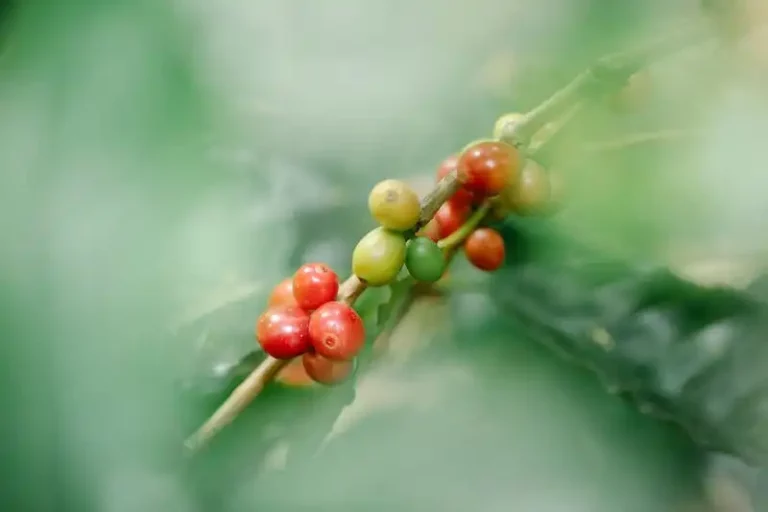English lavender, also known as Lavandula angustifolia, is a common type of lavender that is widely grown for its beautiful and fragrant flowers. It is well-loved for its strong and pleasant scent, which comes from the essential oils found in its foliage and flowers. The compact size and narrow, gray-green leaves of English lavender make it an attractive addition to any garden or landscape.
English lavender is a tough and drought-tolerant plant that thrives in sunny and well-drained soil. It can be grown in various climates and soil types, including coastal regions and rocky or alkaline soils. This variety of lavender is known for its ability to repel pests, making it a popular choice for planting around patios and other outdoor living areas.
When planting English lavender, it is important to prepare the soil by amending it with organic matter to improve drainage and fertility. The plants should be spaced at least 18 to 24 inches apart to allow for air circulation and prevent the spread of disease. Watering should be done regularly but sparingly, as over-watering can lead to root rot and other problems.
English lavender can be propagated through cuttings, which should be taken in late spring or early summer. The cuttings should be approximately 4 to 6 inches long and stripped of their lower leaves. They can then be planted in a mixture of sand and a well-draining potting mix, and kept in a sunny and warm location until roots develop.
Once established, English lavender requires minimal care. It should be pruned after flowering to maintain a compact shape and encourage new growth. Deadheading, or removing faded flowers, will also promote additional blooms. In colder climates, the plants may benefit from a layer of mulch or a covering of burlap to protect them from harsh winter conditions.
English lavender is a versatile plant that has many uses. It is commonly used in cooking and baking, as well as for making fragrant sachets and potpourri. The high-quality essential oil extracted from English lavender is used in the production of perfumes, soaps, and other beauty products. Additionally, the flowers can be dried and used in floral arrangements or crafts.
Whether you’re a seasoned gardener or new to the world of lavender, English lavender is a great choice. Its beautiful flowers, lovely scent, and easy-to-grow nature make it a popular plant for gardens of all sizes. Learn more about the different types of English lavender and how to care for them to create a stunning and fragrant landscape.
Lavandula angustifolia
Lavandula angustifolia, commonly known as English lavender, is a medium-sized shrub that belongs to the Lamiaceae family. It is a popular plant among gardeners and is known for its beautiful flowers and soothing scent.
English lavender is easy to grow and requires well-drained soil. It can be planted in a sunny spot in the garden or in containers. The plant is drought-tolerant and only needs to be watered every three to four days. It is also disease-resistant and blooms from late spring to early summer.
Propagation of Lavandula angustifolia can be done through seeds or cuttings. Seedlings can be started indoors in seed trays or directly sown in the garden. Cuttings can be taken from mature plants and rooted in moist soil. Both methods are relatively easy and have a high success rate.
When planting Lavandula angustifolia, it is important to choose a location with full sun exposure and well-drained soil. The plant thrives in a variety of soil types, including sandy, rocky, and heavy soils. However, it performs better in infertile soils and does not require much fertilizer.
Lavandula angustifolia is a versatile plant that offers many uses. The flowers can be used in cooking, potpourri, and crafts. The dried flowers also retain their scent and can be used in sachets or as a sleep aid. The foliage has a mint-like scent and can be used fresh or dried for its aromatic properties.
English lavender is a low-maintenance plant and only requires minimal care. It should be pruned in late summer to maintain its shape and encourage bushier growth. Deadheading the flowers will prolong the blooming period and keep the plant looking tidy.
Lavandula angustifolia is hardy to frost and can withstand colder temperatures. However, it is important to protect the plant from excessive moisture in the winter months, as this can lead to root rot. The plant is also drought-tolerant and does not require much watering during the dormant period.
In conclusion, Lavandula angustifolia, or English lavender, is a beautiful and fragrant plant that is easy to grow. It can be enjoyed in the garden or used for various purposes such as cooking and crafting. With its attractive flowers and aromatic foliage, it is a valuable addition to any garden.
Lavender
Lavender is a flowering plant in the Lamiaceae family and is known for its compact and high-quality attributes. It belongs to the genus Lavandula and is native to the Mediterranean region and several other parts of the world.
Lavender is a versatile plant that can be used in various ways. It can be grown in gardens, raised beds, containers, and even indoors as a potted plant. Lavender has a distinct scent and is often used in perfumes, soaps, and essential oils.
When it comes to growing lavender, there are a few important things to know. Lavender prefers well-drained soil and full sun exposure. It can tolerate a range of soil types, including alkaline and clay soils. The plant is also drought-tolerant and does not require frequent watering.
For overwintering, lavender should be pruned in the spring to encourage new growth. This helps in maintaining the plant’s compact habit and prevents it from becoming too leggy. Pruning also promotes better air circulation and reduces the risk of diseases.
Lavender can be propagated through various methods, including seed sowing, stem cuttings, and layering. It is a relatively easy plant to propagate, making it a popular choice among gardeners.
When it comes to pests and diseases, lavender is generally a low-maintenance plant. However, it can sometimes be affected by common pests such as aphids, spider mites, and thrips. Regular inspection and early intervention can help prevent and control these problems.
In terms of uses, lavender has a wide variety of applications. It is commonly used in cooking, aromatherapy, and herbal medicine. Lavender has also been used for centuries as a sleep aid and for relaxation purposes.
Lavender is a valuable addition to any garden or landscape. Its beautiful flowers and aromatic scent make it a favorite among gardeners. Whether used as a border plant, a focal point, or even as a hedge, lavender adds beauty, color, and texture to any outdoor space.
In conclusion, lavender is a versatile and attractive plant that offers numerous benefits to gardeners. Its botanical and medicinal properties, along with its aesthetic value, make it a popular choice. By following the basics of lavender care, including proper pruning and providing the right growing conditions, anyone can enjoy the beauty and benefits of this wonderful plant.
Read Next
If you’re a fan of English Lavender and want to learn more about this beautiful plant, here are some recommendations:
- Learn how to flush English Lavender using the proper pruning techniques. This helps maintain a compact and bushy shape.
- Discover the art of propagating English Lavender through cuttings. It’s a great way to grow more plants for your garden.
- While lavenders are known for their beautiful purple flowers, did you know there are also types with pink, white, and even yellow blooms? Explore the different colors available.
- If you’re interested in growing lavender from seedlings, find out the best practices for nurturing and caring for these delicate plants.
- Preserving the relaxing scent of lavender is easy. Learn how to dry lavender bundles or make lavender-infused oils and products for a calming aromatherapy experience.
- Watch a video tutorial on how to prune lavender and keep them healthy and vibrant.
- Discover the benefits of growing lavender in containers, and learn about the special requirements and considerations for successful container gardening.
- Explore the various uses of lavender, from culinary purposes to DIY crafts and natural remedies.
- Get tips on how to repel pests and diseases that can affect lavender plants, and keep them thriving.
- Find out about the ideal growing conditions for lavender, including the amount of sunlight, temperature, and soil type they prefer.
- If you’re interested in growing lavender for its essential oil, learn about the best lavender varieties and tips for maximizing oil production.
- Discover the characteristics of different lavender varieties, such as French lavender (Lavandula dentata) with its unique toothed foliage and Spanish lavender (Lavandula stoechas) with its distinctive “rabbit ear” bracts.
Whether you’re a beginner or have some experience with lavender, there is always something new to learn and explore about this versatile and aromatic plant.
How to Grow English Lavender Plants That Look and Smell Divine
If you’re an avid gardener or just enjoy the beauty and aroma of flowers, learning how to grow English lavender plants can be a worthwhile endeavor. English lavender, also known as Lavandula angustifolia, is a type of lavender that is highly valued for its fragrant flowers and compact habit. It is the perfect plant for adding color, texture, and a heavenly scent to your garden.
Growing English lavender is relatively easy, especially if you live in cooler zones where this plant thrives. English lavender can be grown from seedlings, cuttings, or even indoors. If you decide to grow English lavender from seedlings, the best time to plant them is in the spring. They should be planted in a sunny spot with well-drained soil, preferably mixed with sand to improve drainage.
Once planted, English lavender requires minimal care. The plants need to be watered regularly, but it’s important not to overwater them. They prefer dry conditions and can withstand longer periods of drought. Pruning is essential to keep the plants compact and encourage better flowering. This should be done in the spring or fall, cutting back the flowering stems by about one-third of their size.
English lavender is relatively resistant to diseases and pests. However, to keep them healthy, it’s recommended to fertilize them once a year with a slow-release fertilizer. Divide the plants every few years to maintain their vigor. This will also give you extra lavender plants to share with friends or plant in different areas of your garden.
One of the most appealing aspects of English lavender is its wonderful aroma. The flowers release a sweet, calming scent that can help repel pests and add a relaxing atmosphere to your outdoor spaces. The flowers can be harvested and dried to create fragrant potpourri or used in cooking and baking.
With their beautiful flowers and heavenly scent, English lavender plants make a great companion for other flowering plants in your garden. Planting them alongside roses, salvia, or even other types of lavender, like Lavandula stoechas, can create a stunning display of colors and fragrances that will delight any gardener.
So, don’t wait any longer! Watch your English lavender plants grow and enjoy their divine beauty and fragrance. Growing this type of lavender is a rewarding experience for any gardener, whether you’re a beginner or have years of gardening experience. Take the time to learn about the different types of English lavender that can be grown and find the ones that suit your preferences and gardening style.
In no time, you’ll have a garden filled with beautiful lavender plants that not only look amazing but also smell divine.



